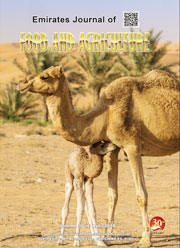EVALUATING THE GRAFTING APPROACHES FOR UTILIZING THE RICE STRAW ASENVIRONMENTAL FRIENDLY AND POTENTIAL LOW COST HYDROGELS
DOI:
https://doi.org/10.9755/ejfa.v25i3.11031Keywords:
Hydrogels, Agricultural waste management, Rice straw, Eco-grafting approach, Water absorbent biopolymer, Biopolymer applicationAbstract
The present work deals with producing water absorbent hydrogels from rice straw (RS) without any pretreatment. The utilization of RS (an undesirable bio waste) for production of the required hydrogels will add highly to the economic value, contribution reducing the environmental impact of waste disposal and most importantly provide a potentially inexpensive alternative biopolymer to the existing commercial hydrogels from petrochemical origins. The required hydrogels were prepared on a Lab- and Pilot scale via different graft copolymerization approaches with acrylonitrile, by using a technique which reduces the environmental impact, resulting from loading of waste-water by non-reacted monomer, to a minimum. The prepared hydrogels were characterized by using chemical analysis, IR- spectra and thermo gravimetric analysis TGA analysis. As well as, the role of grafting approach and pH-value on affinity of the hydrogels produced to absorb water (distilled and Nile water) was evaluated. The results obtained show that, grafting of precyanoethylated RS, using persulfate-persulfite initiation system, followed by alkali hydrolysis provide hydrogel with relatively higher absorption capacity towards both distilled and Nile water than using Ferrous sulfate-H2O2 initiation system. The candidate hydrogels have no toxic (inhibitory) effect against the most efficient micro-organisms in plants media (rhizosphere).










 .
. 